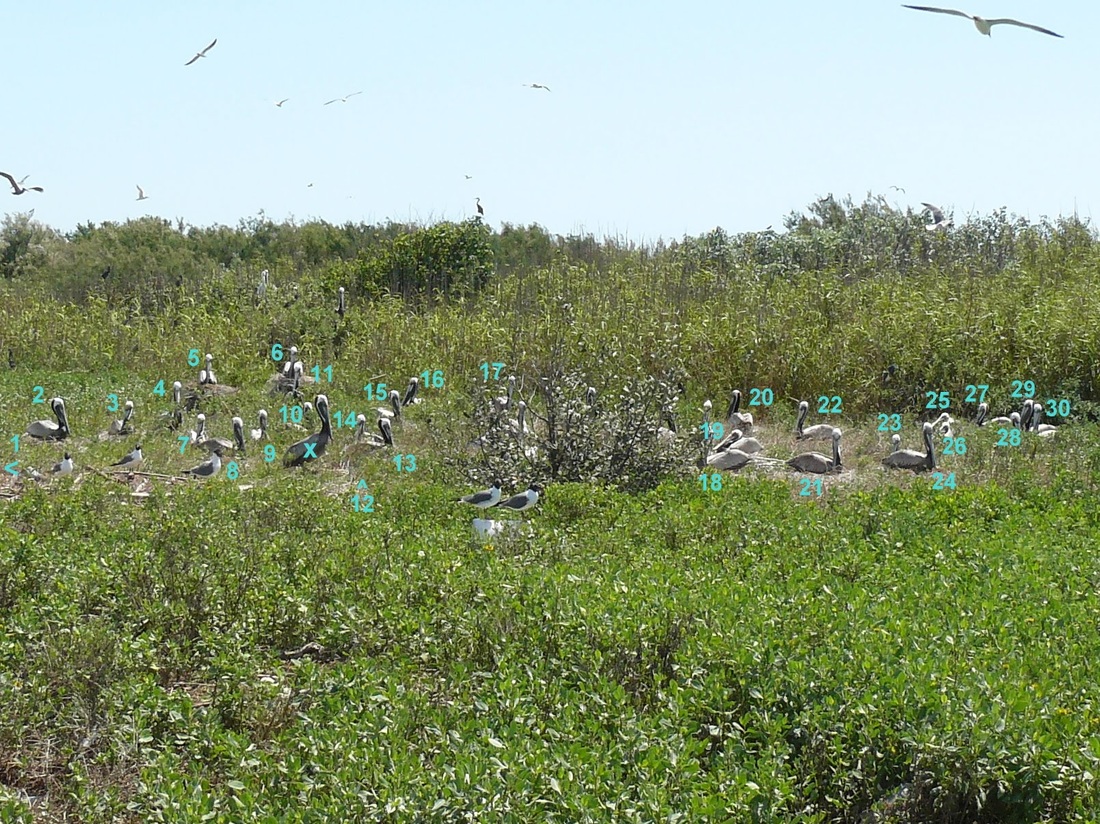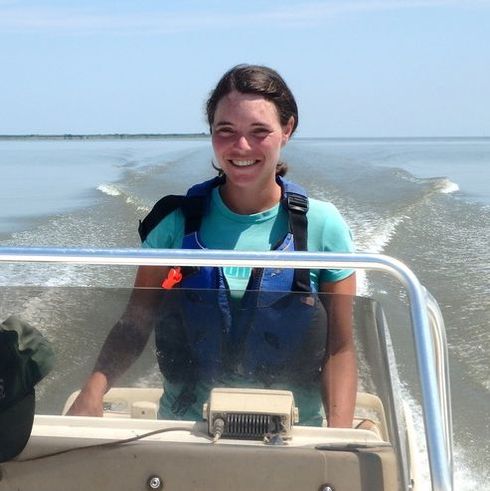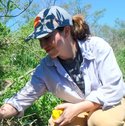I mentioned in my last post that one of our main goals this year is to calculate nest productivity at several pelican colonies along the Texas coast. Productivity is a measure of how many chicks per nest successfully fledge-- that is, how many survive long enough to leave the colony and potentially become breeders in the future. To do this, we have to visit nesting colonies throughout the season and keep track of the contents of selected nests. Since pelican chicks start to move away from their nests at about one month old but don't fledge until they are nearly three months old, this becomes more difficult as the season progresses.
For now, we catalog our productivity plots by photographing a section of nests, numbering each one, and checking each numbered nest every five days.
Once the chicks are mobile, we will band each one with an engraved plastic band so we can track down individual chicks after they move away from the original nest sites.
Since mortality is likely high during the first winter after fledging, a productivity estimate isn't a perfect measure of how many individuals join the population each year. However, it is a good means of comparing the number of young produced by nesting pelicans in different habitats or different areas, which can help us to understand population trends across a range of conditions. Besides measuring productivity at different colonies, we are also comparing ground-nesting to shrub-nesting pelicans to see if chick survival increases with nest height, as has been observed in Louisiana.
In addition, we are focusing our efforts on collecting diet samples from chicks and conducting observations of feeding rates and nest attendance. These data will complement productivity and spatial data to help us understand where and how pelicans choose to forage,as well as how these decisions affect their ability to successfully raise chicks.
This all means we get to spend a lot of time watching pelican chicks, which is a pretty entertaining way to spend a few hours.
Since mortality is likely high during the first winter after fledging, a productivity estimate isn't a perfect measure of how many individuals join the population each year. However, it is a good means of comparing the number of young produced by nesting pelicans in different habitats or different areas, which can help us to understand population trends across a range of conditions. Besides measuring productivity at different colonies, we are also comparing ground-nesting to shrub-nesting pelicans to see if chick survival increases with nest height, as has been observed in Louisiana.
In addition, we are focusing our efforts on collecting diet samples from chicks and conducting observations of feeding rates and nest attendance. These data will complement productivity and spatial data to help us understand where and how pelicans choose to forage,as well as how these decisions affect their ability to successfully raise chicks.
This all means we get to spend a lot of time watching pelican chicks, which is a pretty entertaining way to spend a few hours.



 RSS Feed
RSS Feed
